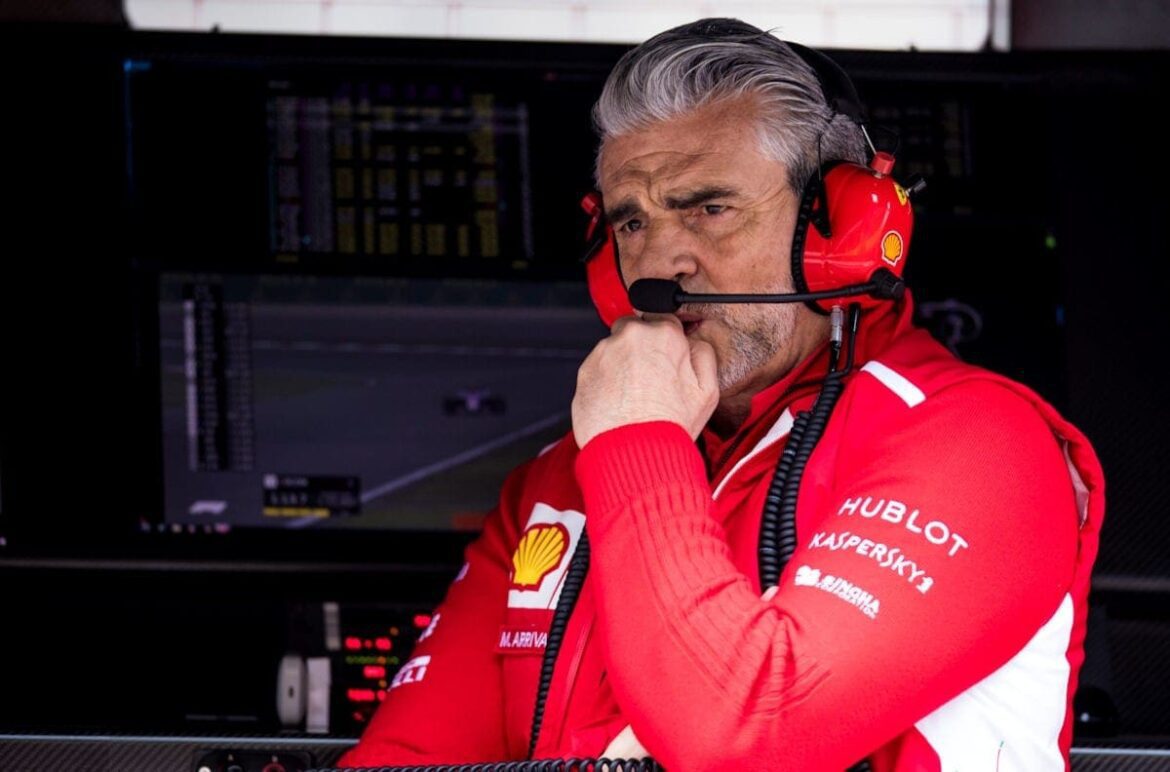Maurizio Arrivabene Discusses Ferrari’s Current Challenges and Future Prospects
Maurizio Arrivabene, the former head of Ferrari, recently shared his insights on the current state of the Maranello team amidst growing speculation about the dissatisfaction of drivers Charles Leclerc and Lewis Hamilton regarding the team’s performance. In an interview with the Italian newspaper Tuttosport, Arrivabene delved into the technical challenges of Formula 1 and offered his perspective on the leadership of Frédéric Vasseur.
Understanding the Technical Challenges of Formula 1
Arrivabene emphasized the complexities involved in developing a competitive Formula 1 car. He pointed out that while a supercar consists of approximately 5,000 components and has a development cycle of four years, a Formula 1 car is composed of around 50,000 parts and requires rapid adjustments within a mere six-month timeframe. The pressure to deliver a successful vehicle is immense, as any errors made during development can have lasting repercussions throughout the entire season.
This stark contrast between supercars and Formula 1 vehicles illustrates the high stakes that teams face. Arrivabene’s experience within the team has given him a profound understanding of these intricate mechanisms and the technical difficulties that come with them. He noted that even small miscalculations can lead to significant setbacks, causing teams to struggle for performance for many races.
Praise for Frédéric Vasseur’s Leadership
In his discussion about Ferrari’s management, Arrivabene offered praise for Frédéric Vasseur, highlighting his expertise and seriousness in handling the team’s operations. He remarked on Vasseur’s deep knowledge of the sport, stating, “Vasseur is a serious person who understands the subject.” Arrivabene acknowledged that his own background helped him communicate effectively within the team due to his fluency in Italian, allowing him to grasp the nuances and ideas expressed by his colleagues.
Vasseur’s leadership style aims to foster a collaborative environment where technical challenges can be faced head-on. Arrivabene’s confidence in Vasseur’s capabilities suggests that he believes the team is in capable hands, even during this challenging period.
Current Challenges Facing Ferrari
Despite the positive outlook regarding Vasseur’s leadership, Arrivabene did not shy away from addressing the current shortcomings of Ferrari. He candidly stated that the team lags behind competitors in terms of tire compounds and aerodynamics, although he acknowledged that Ferrari continues to produce engines that outperform many rivals in the field. This duality highlights the ongoing struggle for balance within the team, as they strive to enhance overall performance while maintaining their reputation for engineering excellence.
According to Arrivabene, British teams often possess a technological advantage due to their long-standing traditions and close ties with universities. This proximity allows them to innovate and refine their technologies continuously. However, he expressed optimism about the progress being made in Maranello, asserting that patience is essential for the team to regain its competitive edge.
The Path to Progress
Arrivabene emphasized that success in Formula 1 is not solely about winning races; it also involves industrial advancement and innovation that can benefit the broader automotive industry. He noted, “It’s not just about winning races; it’s about progressing industrially.” This perspective highlights the dual role that a top-tier racing team plays in the automotive sector — as both a competitor on the track and a pioneer in technological advancements.
He believes that the efforts being made at Ferrari will eventually yield positive results, contributing not only to the team’s success but also to the Italian automotive industry as a whole. This long-term vision is crucial for the team’s growth and stability in the highly competitive world of Formula 1.
Ferrari’s Championship Standings
Ferrari’s recent performance has seen fluctuations, particularly after losing second place in the Constructors’ Championship to Mercedes following the Azerbaijan Grand Prix. However, the gap between the two teams is narrow, with only a four-point difference separating them. This slim margin indicates that Ferrari has a realistic chance to reclaim their position if they can deliver strong performances in upcoming races.
The next opportunity for Ferrari to improve their standing will occur at the Singapore Grand Prix, scheduled for October 3-5. The expectations are high, and the team’s ability to adapt and perform well in this challenging circuit will be critical for their aspirations in the championship race.
The Importance of Communication and Team Dynamics
Effective communication within a Formula 1 team is paramount. Arrivabene’s insights into the nuances of team dynamics underscore the significance of having a cohesive unit that can work together to tackle the multifaceted challenges of racing. Understanding the perspectives of drivers, engineers, and management is crucial for fostering an environment where innovation and performance can thrive.
The relationship between drivers and the technical team plays a vital role in the development process. Feedback from drivers like Leclerc and Hamilton can provide invaluable insights into the car’s performance, helping engineers make necessary adjustments. Arrivabene’s acknowledgment of the importance of this feedback loop is a testament to the collaborative spirit that is essential for success in the sport.
Looking Ahead: Ferrari’s Future in Formula 1
As Ferrari navigates its current challenges, the focus remains on future developments and strategies that will help the team regain its competitive edge. The insights shared by Maurizio Arrivabene serve as a reminder of the complexities involved in Formula 1 racing and the ongoing efforts required to stay at the forefront of the sport.
With a commitment to innovation, collaboration, and a long-term vision for success, Ferrari aims to not only reclaim its position among the top teams but also to contribute to the evolution of the automotive industry. The path forward may be fraught with obstacles, but the potential for progress and achievement remains strong.
As the Singapore Grand Prix approaches, all eyes will be on Ferrari to see how they will respond to the current challenges and whether they can leverage their strengths to enhance their performance. The journey ahead is sure to be exciting, with the promise of thrilling races and the continued pursuit of excellence in Formula 1.
